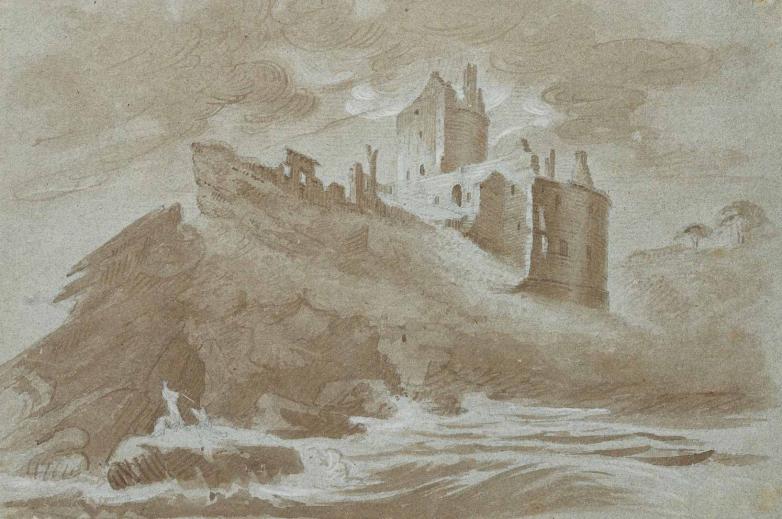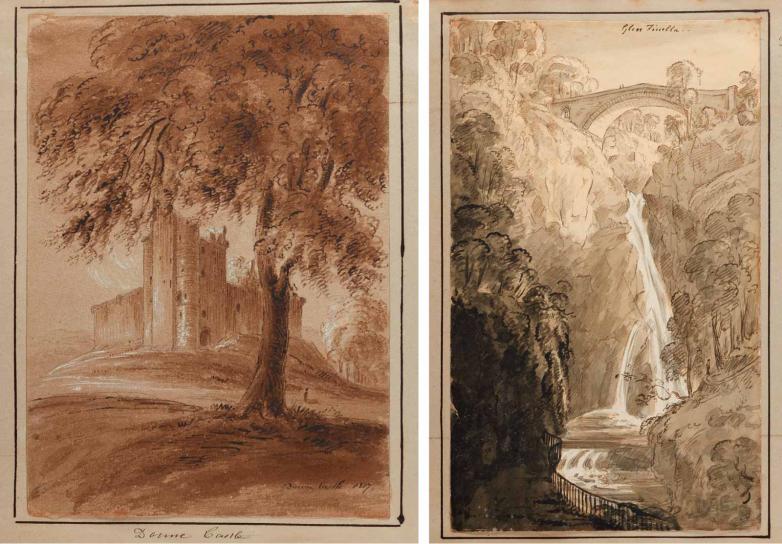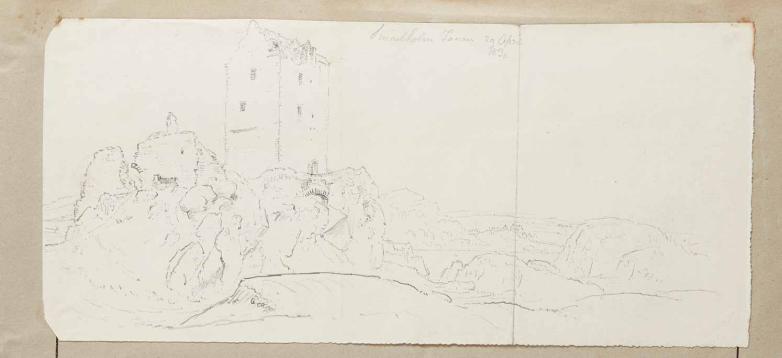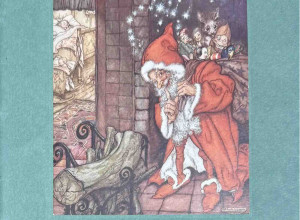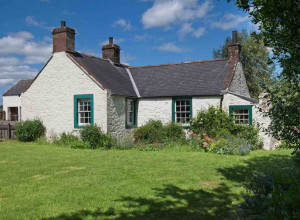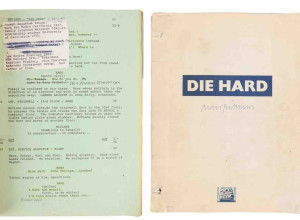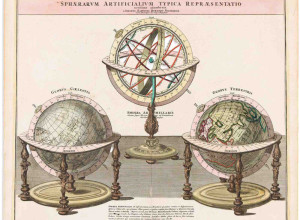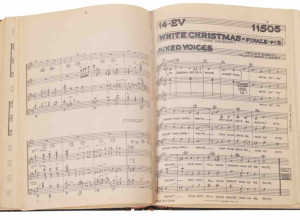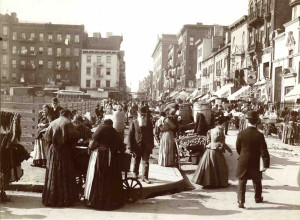“These sketches are a record of an extraordinary creative collaboration,” said Dr. Paul Barnaby, acquisition and Scottish literary collections curator at the Centre for Research Collections, Edinburgh University Library, which bought the album for £42,500 ($60,000). “James Skene accompanied Scott on riding excursions to localities that Scott planned to feature in his novels and poems. There, at Scott’s suggestion, Skene made sketches of landscapes and buildings that Scott then used as inspiration and aide-memoires for his own work.”
Here is Skene describing these joint literary-artistic expeditions: “The beauty of the scenery gave full employment to my pencil, with the free and frequent exercise of which he [Scott] never seemed to feel impatient, for he was ready and willing at all times to alight where any scene attracted our notice.”
The album includes sketches with connections to Scott’s novels Rob Roy (1817), The Heart of Mid-Lothian (1818), and The Abbot (1820), and among Barnaby’s favorites are two drawings of Smailholm Tower. “An ailing Scott asked Skene to sketch the tower on what he realized would be his last trip to Smailholm,” he said. “I also like the eerie sketches of Doune Castle and Niddrie Castle which feature in Waverley and The Abbot respectively.”




